CONTENTS
Facts about the First All-Star Game
Game with Most Hall of Famers
Former President Offered Commissioner's Job
Last Player-Manager
3,000th and Last Hit
Nine Straight Doubleheaders
Knicks, not Dodgers
Fenway Fall Classic without the Red Sox
"Sullivan" Breaks In
Bobo Kept His Bag Packed
Baseball
Did You Know – II
Baseball
Did You Know – III
Baseball
Did You Know – IV
Baseball
Did You Know – V
Baseball
Did You Know – VI
Baseball
Did You Know – VII
Baseball Page |
Baseball
Did You Know? – I
Facts about the First All-Star Game
The first ML All-Star game was held on Thursday, July 6, 1933, at Comiskey Park, Chicago.
- The game was the brainchild of Chicago Mayor Edward J. Kelly who wanted a sporting event for the Chicago World Fair of 1933. He turned to Colonel Robert McCormick, editor and publisher of the Chicago Tribune, who in turn enlisted his sports editor Arch Ward, former publicity man for Knute Rockne at Notre Dame.
- Ward pushed the idea of an All-Star game with baseball's league commissioners and owners. The game's greatest players together on one field.
- Ward should have approached Commissioner K. M. Landis first but Arch was surprisingly intimidated by the former federal judge. So instead he laid out his idea for AL President Will Harridge. One of his arguments was that, by staging the game at Comiskey Park, baseball could erase some of the stigma created by the 1919 Chicago "Black Sox." Harridge lobbied his eight owners and obtained unanimous approval.
- NL President John Heydler met resistance. He started with Cubs owner Philip Wrigley, who didn't think an exhibition game was worth interrupting the regular season for. But Cubs President Bill Veeck Sr. warned that it wouldn't be in the team's interest to irritate the city's largest newspaper.
- Giants owner Charles Stoneham also opposed squeezing the game into his team's already tight schedule, but Ward explained that he had chosen a date that would accommodate travel requirements with a minimum of schedule disruption.
- Sam Breadon, Cardinals owner, feared that the game would become an annual affair, but Ward assured him that that was not the case. (Little did he know.)
- Eventually, the NL went along with the proposal. As a result, the schedule makers shut down both leagues on July 6 to free players for the game.
- The fans and managers selected the players, and legends John McGraw of the Giants and Connie Mack of the Athletics were chosen to manage the teams.
- Bleacher tickets, which cost 55 cents, sold out in 45 minutes. Grandstand tickets at $1.10 and boxes at $1.65 took two days.
- 47,595 packed the park on a sunny day for the game. Babe Ruth rose to the occasion and smacked a two-run HR to spark the AL's 4-2 victory.
- Landis was so pleased he proclaimed, "That's a grand show, and it should be continued." Even Stoneham favored making the game an annual event and offered to hold the 1934 game in his park, the Polo Grounds.

National League 1933 All-Star Team
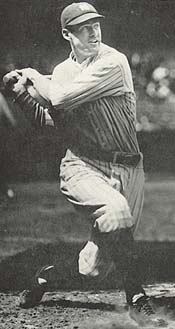
Earle Combs
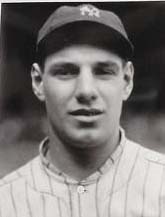
Leo Durocher

Lou Gehrig
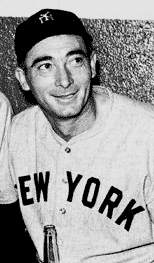
Tony Lazzeri
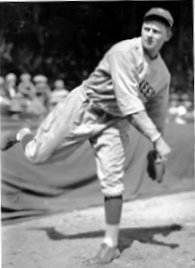
Waite Hoyt
|
Game with Most Hall of Famers
The question has often been asked: What major league game featured the most future Hall of Famers?
- For decades, answering that question required hundreds if not thousands of man-hours of research.
- But thanks to the monumental efforts that created the websites Baseball Reference and Retrosheet and to computer programs written specifically to research the databases at those sites for Hall of Famers in games, the answer has been revealed in the Winter 2011 edition of Memories and Dreams, the magazine of the Baseball Hall of Fame.
- The researchers decided to include managers and umpires as well as players in counting Hall of Famers in each game.
- The computer programs identified the regular season game in which the most future Cooperstown inductees participated.
May 24, 1928: First game of a doubleheader at Shibe Park between the New York Yankees and the Philadelphia Athletics
17 future Hall of Famers participated:
- Umpires Tommy Connolly and Bill McGowan
- Managers Miller Huggins (Yankees) and Connie Mack (A's)
- Yankees players
- CF Earle Combs
- SS Leo Durocher
- LF Babe Ruth
- 1B Lou Gehrig
- 2B Tony Lazzeri
- P Waite Hoyt
- Athletics players
- RF Ty Cobb
- CF Tris Speaker
- C Mickey Cochrane
- PH Al Simmons
- PH Eddie Collins
- P Lefty Grove
- PH Jimmie Foxx
There were three more Cooperstown enshrinees on the Yankees roster, but they didn't appear in the game.
- P Stan Coveleski
- P Herb Pennock
- C Bill Dickey
Yankees executive Ed Barrow also made the Hall.
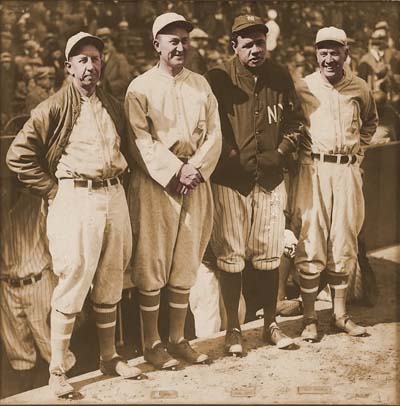 (L-R) Eddie Colllins, Ty Cobb, Babe Ruth, Tris Speaker
(L-R) Eddie Colllins, Ty Cobb, Babe Ruth, Tris Speaker
The game was the first of a six-game series touted as "the battle for first place."
- The defending World Series champions from New York led the AL by 3.5 games.
- The A's held down second with a 21-8 record.
- The Yanks won the game in question 9-7 with Hoyt, normally a starter, retiring the last two batters to garner what today would be called a Save.
- Neither team hit a HR in the opener.
- The Yankees dropped the nightcap before a standing room only crowd that exceeded 40,000 even though the twinbill was played on a Thursday. The fans outside the stadium who couldn't get in numbered 15,000, including those perched on rooftops beyond the RF fence. "Only" 12 future Hall members appeared in that game.
The Yanks would not lose another game in the big series.
- Huggins' crew swept a second doubleheader the next day before another 37,000.
- The Yankees also won a single game on Saturday. Attendance: 25,000
- After taking Sunday off because "Blue Laws" in the City of Brotherly Love prohibited games on the Sabbath, New York won the finale on Monday as 16 bound for Cooperstown took part. (No attendance listed.)
- Since the Bronx Bombers would cop the 1928 AL pennant by 2.5 games over the A's, you could say that this six-game series made all the difference.
These two teams always enter any discussion of greatest of all time.
- The '28 pennant was the Yanks' third in a row.
- Philadelphia would win the next three AL crowns.
|
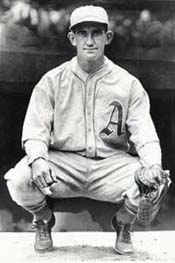
Mickey Cochrane
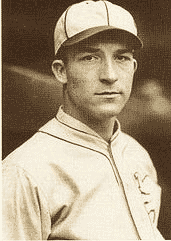
Al Simmons
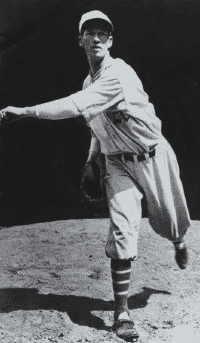
Lefty Grove
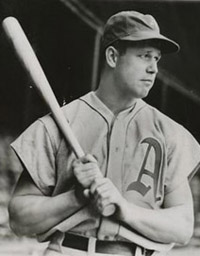
Jimmie Foxx
Top of Page
|
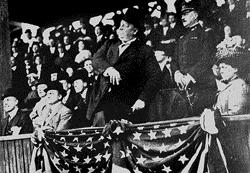
President Taft throws out first ball of 1912 season
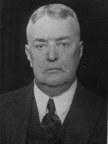
Ban Johnson
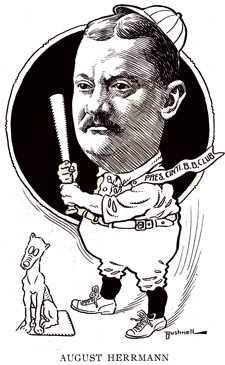
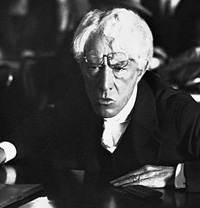
Judge Kennesaw Mountain Landis
|
Former President Offered Commissioner's Job
TAFT OFFERED BASEBALL JOB
Former President May Be Sole Member of National Commission.
BY THE ASSOCIATED PRESS. NEW YORK, Nov. 23 [1918] ? Former President William Howard Taft has been offered the position of sole member of the National Commission of the National and American Leagues, according to an announcement here tonight by H. N. Hempstead, president of the New York Nationals, and Harry Frazee, president of the Boston Americans. Mr. Taft Is said to be considering the offer.
Acceptance by Mr. Taft would mean the passing of the present National Commission, which is composed of the two league presidents and a third member and, it is said, would shear Ban B. Johnson, president of the American League, of the powers which have earned for him the title of "baseball dictator." The offices of the new "one-man commission" would be in New York.
The offer to Mr. Taft is said to have been made without the knowledge of Western presidents of the two leagues. All of the Eastern club presidents are said to have approved the offer, and this would give the originators of the idea sufficient votes to carry the proposal.
Only Two Members Now. The National Commission at present has only two members, former Governor John K. Tener of Pennsylvania having relinquished his seat on the commission when he recently resigned the presidency of the National League. Mr. Johnson and August Herrmann, president of the Cincinnati Nationals, are the present members. John A. Heydler, acting president of the National League, sat as a member of the commission in arranging for the 1918 world's series, but he sat under special authorization from the American League.
The conference between Messrs. Taft, Hempstead and Frazee was held in this city today and Mr. Taft took the offer under consideration without comment. His reply is not expected for several days. The proposition was considered in a general way with the details to be worked out if Mr. Taft accepts, as the two club presidents appear to be hopeful he will. No salary was mentioned. Neither Frazee nor Hempstead would state what other American or National League clubowners had been canvassed in the matter, but intimated that the proposition, had met with hearty support among a majority of the Eastern magnates who had been approached.
Taft refused the offer. Heydler became permanent NL president, making him automatically the third member of the National Commission. One year later, the Black Sox World Series created baseball's biggest scandal. This led to Judge Kennesaw Mountain Landis being named baseball's first commissioner in 1920.
|
 |
Pete
Rose was the last player-manager, doing so for Cincinnati from August 16, 1984, through the end of
the 1986 season, when he retired as a player.
Don Kessinger was the last player-manager in the American League, guiding the 1979 White
Sox until August 2nd, when he resigned. |
 |
|
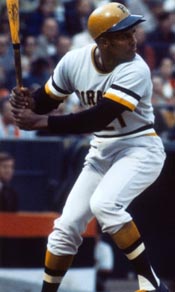 |
On
September 30, 1972 at Three Rivers Stadium in Pittsburgh, Roberto
Clemente hit a double off John Matlack of the New York Mets for his 3,000th
hit. He then got 4 more hits in the League Championship Series against Cincinnati.
When a giant earthquake hit Nicaragua that December, Roberto arranged for emergency relief supplies to be flown in. Learning, however,
that the packages were being diverted by the Somoza regime, he decided to
accompany the fourth flight to make sure the aid was delivered to the victims.
Immediately after takeoff from Isla Verde, Puerto Rico, the plane crashed,
killing all aboard. Clemente's body was never recovered.
Since post-season hits do not count in a player's career number, Clemente officially
is credited with exactly 3,000 hits.
|
|
Nine Straight Doubleheaders

George Sisler |
The
1928 Boston Braves played nine
consecutive double-headers from September 4 to 15.
- They lost five of the double-headers
in a row, one at Philadelphia and four to the Giants in Boston.
- They had also played twinbills on August 31 and September 1.
- Then they played
two again on September 20, 21, 22, and 24. That adds up to 33 games in 24
days!
- Their record in the 15 doubleheaders was 11-19.
- The 7th-place Braves managed to sweep one of them in Cincinnati on September 22.
- Two future Hall-of-Famers were on the 1928 Braves: George
Sisler, who hit .340, and Rogers
Hornsby, who hit .387.
|

Rogers Hornsby |
|
In
high school, Sandy Koufax's dream was to play for the New
York Knicks. A good leaper with large hands (he could palm
the ball), he made the Brooklyn Eagle sports pages (as Caufax, Kaufox,
or Kofax) for his exploits on the Lafayette High basketball team. "He
was an incredibly smooth basketball player," said Alan Dershowitz,
another neighborhood kid who became famous. "He would fake a jumper,
drive the baseline, come under the boards and reverse and dunk. We weren't
used to that."
After graduating from Lafayette, Koufax received a basketball scholarship to Cincinnati University. Have you found him yet in the picture? He's in the top row, center.
|
 |
|
Fenway Fall Classic without the Red Sox
The 1914
Boston National League
team, called the "Miracle Braves,"
staged one of the greatest comebacks in any sport. On July 19th, the Braves resided in last
place, 15 1/2 games behind the New York
Giants. They then won 51 of their next 67 games for
an astounding .761 winning percentage!
The Braves
hosted the Giants in a
Labor Day doubleheader with the teams in a flatout tie for the lead.
Because the Braves home
field, the South
End Grounds, seated only 11,000, the club obtained permission of
the crosstown Red Sox
to play the doubleheader at 35,000-seat Fenway
Park, then in its third year of use and often called "American
League Park" at that time. The DH drew 74,163 fans. Boston
won the morning game, 5-4. However, the Giants
took the afternoon nightcap 10-1 to pull back into a tie. The next day,
an overflow crowd of 17,000 saw the Braves
take the rubber game 8-3 on their home field to retake first place,
which they never relinquished. They won the pennant by 10 1/2 games!
The Red
Sox agreed to host the Braves'
World Series home games. (The Red Sox
had played the 1912 World Series at their brand new stadium.) After
beating the Athletics
in the first two games in Philadelphia, the Braves
won Game 3 5-4 in 12 innings before 35,520 at Fenway. Another 34,365
saw the Miracle team complete the four-game sweep, 3-1.
After
the season, the Braves
started construction of a new stadium. While awaiting its completion,
they played their 1915 home games at Fenway until August 18, when Braves
Field, baseball's first 40,000-seat stadium, opened. The Braves
played there until 1953 when the franchise moved to Milwaukee. This
tenure included one World Series in 1948 when Boston
lost to Cleveland in six
games. (The Braves moved
again in 1966 to Atlanta.) Parts of the stadium are still used today
in Nickerson
Field, home of Boston University
football and soccer.
|
 |
Hall
of Fame second baseman Eddie
Collins broke into the American League in unusual circumstances.
On
September 17, 1906, he played SS flawlessly and hit a single off Ed
Walsh of the White Sox while playing for Connie
Mack's Philadelphia Athletics.
However, the box score listed the SS as "Sullivan." Mack gave Collins the pseudonym to avoid
endangering Collins' status as the starting QB of the Columbia football team
However,
the ploy didn't work. When Collins returned to Columbia for the fall term, he learned that he had lost his college eligibility but
not because of the six games he played with the A's.
Instead, his earlier tenure with a semipro baseball team had been discovered. Collins had used his earnings to finance his education.
|
Eddie went on to have the longest major league playing career of the 20th century
– 25 years (1906-1930). Mack eventually called Collins "the finest infielder of all time." Eddie served Connie as a member of the A's "$100,000 infield" that won four pennants during five years (1910-1914).
Reference: Baseball's Hall of Fame, Where the Legends Live Forever, Lowell
Reidenbaugh
|
 |
Bobo
Newsom is the first major league player to have worn the
number "00." He did that during his fourth stint
with the Washington Senators in 1946/1947. That's right – his fourth sojourn in the
Nation's Capital (but not his last). Bobo, whose real
name was Louis Norman Newsom, is best known for his
peripatetic career. Below is the list of his stops.
Newsom's
best seasons were 1940 (20-5 for Detroit),
1939 (20-11 with Browns and Tigers), and 1938
(20-16 for Browns). He played in the World Series for Detroit in 1939 and 1940
and for the Yankees in 1947. For his career Bobo was 211-222 with a 3.98 ERA.
|
1929-30:
Brooklyn Dodgers |
1932
Chicago Cubs |
1934-35
St. Louis Browns |
1935-7
Washington Senators |
1937
Boston Red Sox |
1938-9
St. Louis Browns |
1939-1941
Detroit Tigers |
1942
Washington Senators |
1942-3
Brooklyn Dodgers |
1943
St. Louis Browns |
1943
Washington Senators |
1944-6
Philadelphia Athletics |
1946-7
Washington Senators |
1947
New York Yankees |
1948
New York Giants |
1952
Washington Senators |
1952-3
Philadelphia Athletics |
|
|
|






















